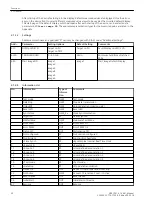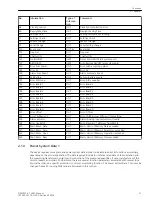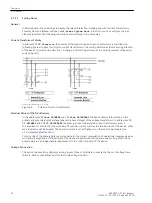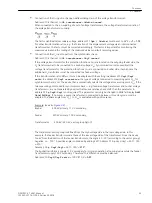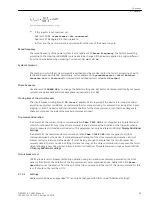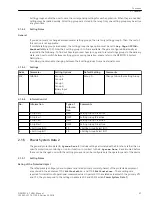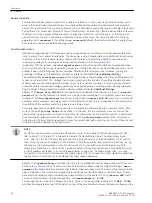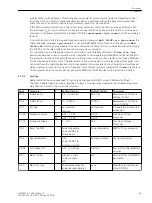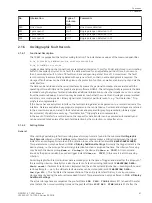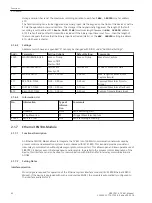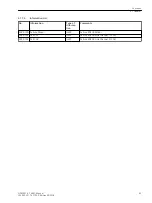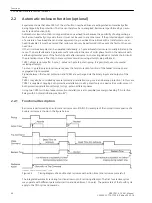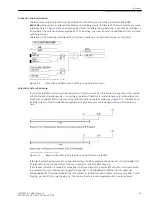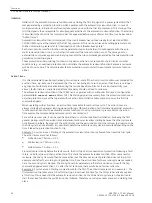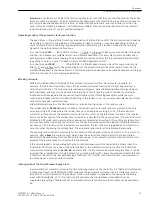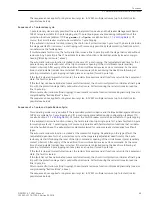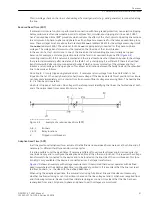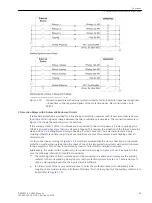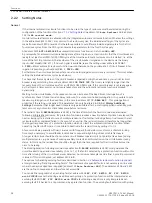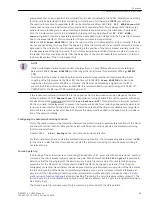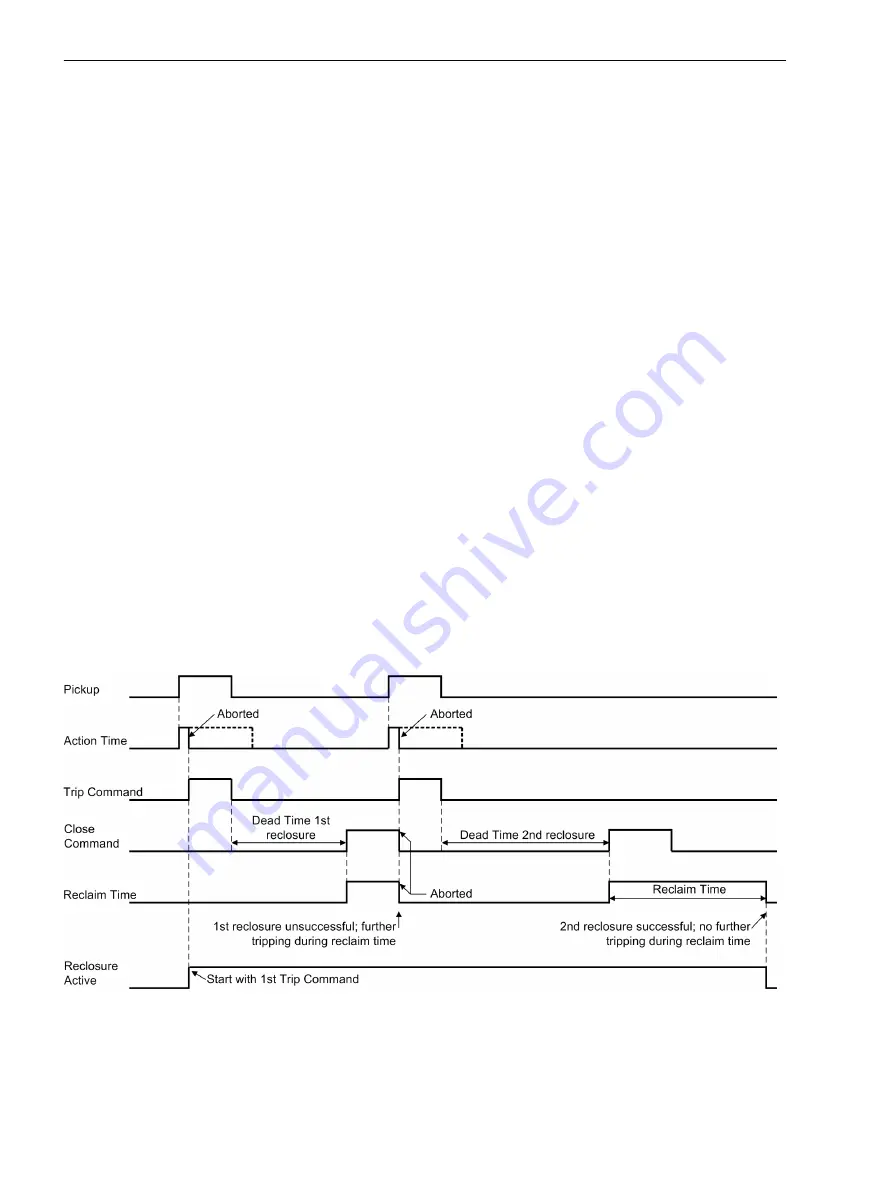
Automatic reclosure function (optional)
Experience shows that about 85% of the arc faults on overhead lines are extinguished automatically after
being tripped by the protection. The line can therefore be re-energized. Reclosure is performed by an auto-
matic reclose function (AR).
Automatic reclosure function is only permitted on overhead lines because the possibility of extinguishing a
fault arc automatically only exists there. It must not be used in any other case. If the protected object consists
of a mixture of overhead lines and other equipment (e.g. overhead line in block with a transformer or over-
head line/cable), it must be ensured that reclosure can only be performed in the event of a fault on the over-
head line.
If the circuit breaker poles can be operated individually, a 1-pole automatic reclosure is usually initiated in the
case of 1-phase faults and a 3-pole automatic reclosure in the case of multi-phase faults in the network with
earthed system star point. If the fault still exists after reclosure (arc not extinguished or metallic short-circuit),
the protection issues a final trip. In some systems several reclosing attempts are performed.
7VK61 allows reclosure after 3-pole, 1-pole and 1-pole /3-pole tripping. It is possible to execute several
reclosing attempts.
1-pole or 1-pole/3-pole auto-reclosure requires the fault protection function of the feeder to issue phase-
segregated trip commands.
Signals between the feeder protection and 7VK61 are exchanged via the binary inputs and outputs of the
relay.
7VK61 may also be controlled by several protective installations (e.g. main and backup protection). In this case
7VK61 is capable of tripping both protective installations in all 3 poles if only one device trips multi-pole or if
both protective installations attempt to trip 1-pole in different phases.
Using two 7VK61 with two feeder protection installations is also possible (see margin heading “2 Protection
Relays with 2 Automatic Reclosure Circuits”).
Functional Description
Reclosure is performed by an automatic reclosure circuit (ARC). An example of the normal time sequence of a
double reclosure is shown in the figure below.
[ablaufdia-2-mal-we-wirkzeit-wlk-310702, 1, en_GB]
Figure 2-5
Timing diagram of a double-shot reclosure with action time (2nd reclosure successful)
The integrated automatic reclosing function allows up to 8 reclosing attempts. The first four reclose cycles
may operate with different parameters (action and dead times, 1-/3-pole). The parameters of the fourth cycle
apply to the fifth cycle and onwards.
2.2
2.2.1
Functions
2.2 Automatic reclosure function (optional)
44
SIPROTEC 4, 7VK61, Manual
C53000-G1176-C159-5, Edition 05.2018
Summary of Contents for SIPROTEC 4 7VK61
Page 8: ...8 SIPROTEC 4 7VK61 Manual C53000 G1176 C159 5 Edition 05 2018 ...
Page 10: ...10 SIPROTEC 4 7VK61 Manual C53000 G1176 C159 5 Edition 05 2018 ...
Page 16: ...16 SIPROTEC 4 7VK61 Manual C53000 G1176 C159 5 Edition 05 2018 ...
Page 176: ...176 SIPROTEC 4 7VK61 Manual C53000 G1176 C159 5 Edition 05 2018 ...
Page 224: ...224 SIPROTEC 4 7VK61 Manual C53000 G1176 C159 5 Edition 05 2018 ...
Page 264: ...264 SIPROTEC 4 7VK61 Manual C53000 G1176 C159 5 Edition 05 2018 ...
Page 270: ...270 SIPROTEC 4 7VK61 Manual C53000 G1176 C159 5 Edition 05 2018 ...
Page 276: ...276 SIPROTEC 4 7VK61 Manual C53000 G1176 C159 5 Edition 05 2018 ...
Page 346: ...346 SIPROTEC 4 7VK61 Manual C53000 G1176 C159 5 Edition 05 2018 ...

